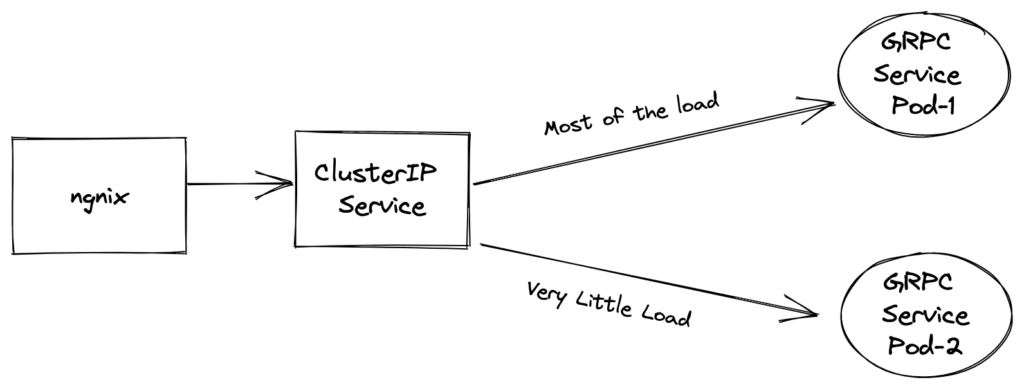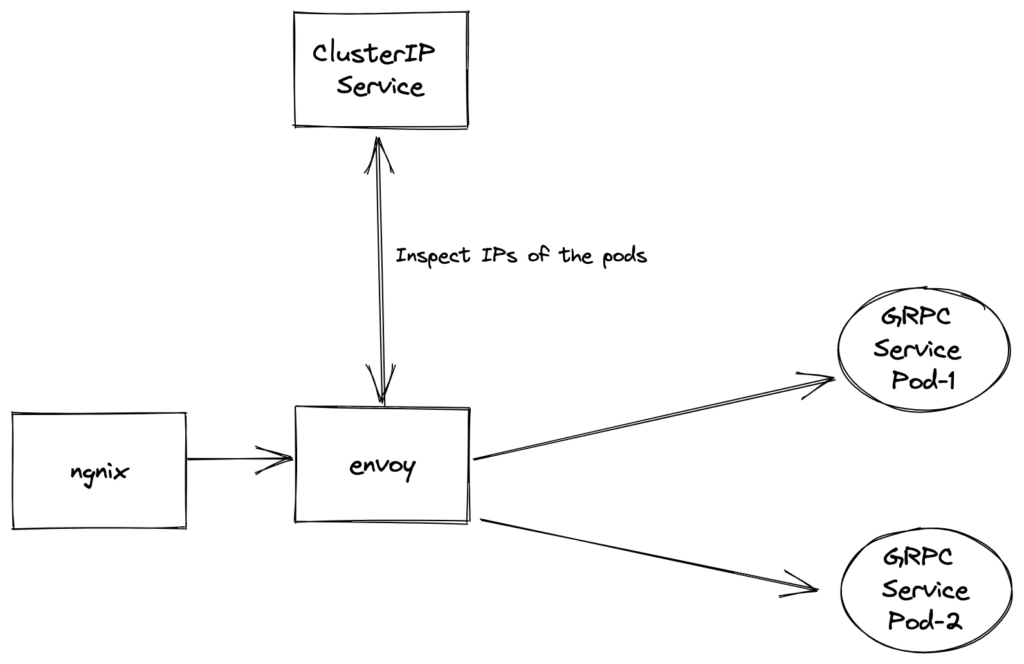Load Balancing a grpc service on k8s
Load balancing a GRPC service on a Kubernetes environment could be a big challenge if you miss out on the fact that GRPC works on HTTP2 and HTTP2 does the magic of multiplexing and reuses the connection for multiple requests. While trying to scale a GRPC service found some interesting insights about how GRPC works with ClusterIP.
Scenario

We created a GRPC service and deployed it on k8s using a ClusterIP service which was exposed using an Nginx server. We did some load tests and figured out its vertical scale limits. so we decided to scale the number of pods on our service to achieve better results. As the k8s documentation mentions
By default, kube-proxy in userspace mode chooses a backend via a round-robin algorithm
With this assumption we expected our horizontally scaled service to evenly distribute load across pods. When we did this we were surprised to see that most of the load was still going to 1 pod. We increased the number of pods but the pattern continues and the load is not evenly distributed.
Problem
After spending hours on the internet and playing with various configurations, we found that GRPC needs HTTP2 and ClusterIP was using HTTP2 which was doing multiplexing. Because of this multiplexing, it was reusing existing connections and sending new requests to the same k8s Pod rather than creating a new connection to the second pod. This phenomenon continues with more pods and a few pods that get most of the load.

Un-even Load Distribution
Solution
As we figured out the problem is with the load balancing system and a solution was achieved in two steps:
- Create a headless k8s service.
- Using a custom/external load balancer.
Let’s look at both of these options in detail
Creating headless k8s service
apiVersion: v1
kind: Service
metadata:
name: headless-svc
spec:
clusterIP: None # <= Don't forget!!
selector:
app: web
ports:
- protocol: TCP
port: 80
targetPort: 8080
A Kubernetes headless service is a ClusterIP service that doesn’t create a cluster IP for your service and exposes the IPs of all the pods that are created. With this approach, you can get the IPs of all the pods that are available for your App.
Using custom/external load balancer
Once your headless service is available you can use any load balancer that has the capability to discover IPs from the ClusterIP service and do the load balancing. For us, envoy being part of our system came to our rescue. We were using envoy to support REST clients on our GRPC service.

Example Envoy Config
clusters:
- name: headless-svc
type: STRICT_DNS
lb_policy: ROUND_ROBIN
connect_timeout: 30s
dns_lookup_family: V4_ONLY
load_assignment:
cluster_name: headless-svc
endpoints:
- lb_endpoints:
- endpoint:
address:
socket_address:
address: headless-svc
port_value: 80
Summary
Kubernetes provides a great abstraction to our deployments, and sometimes it can make debugging load balancing and other internals of services very complex. HTTP2 brings some performance optimisation which can cause behaviours that are not good for some loads. Having an external load balancer that brings more control and clarity can be a boon. Envoy is one such proxy that can do a lot of powerful stuff with very little resources.